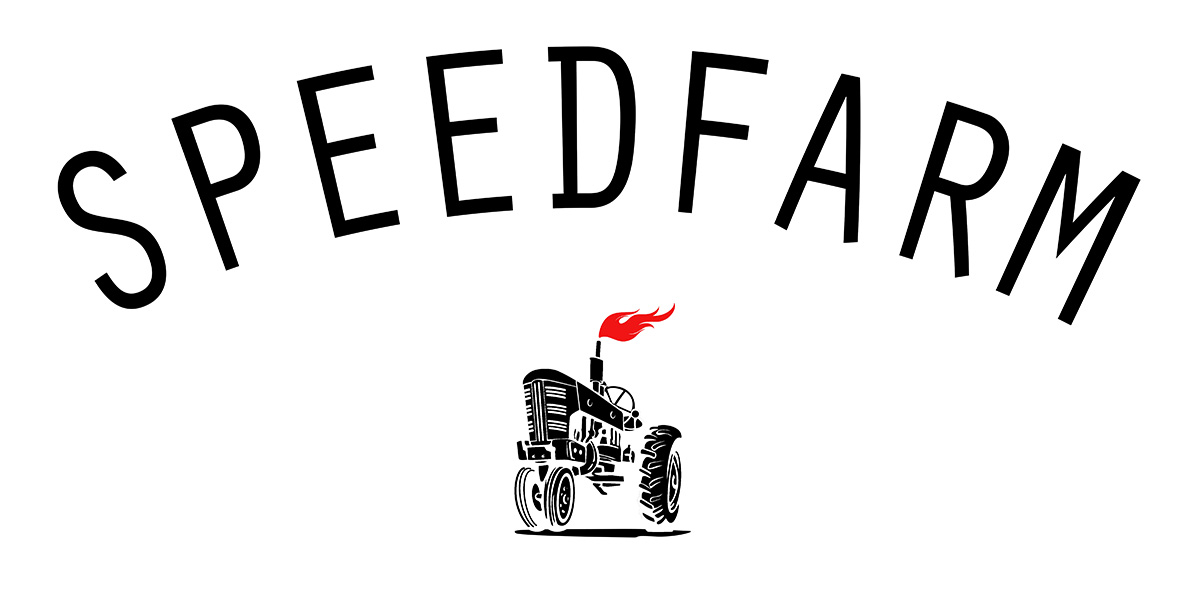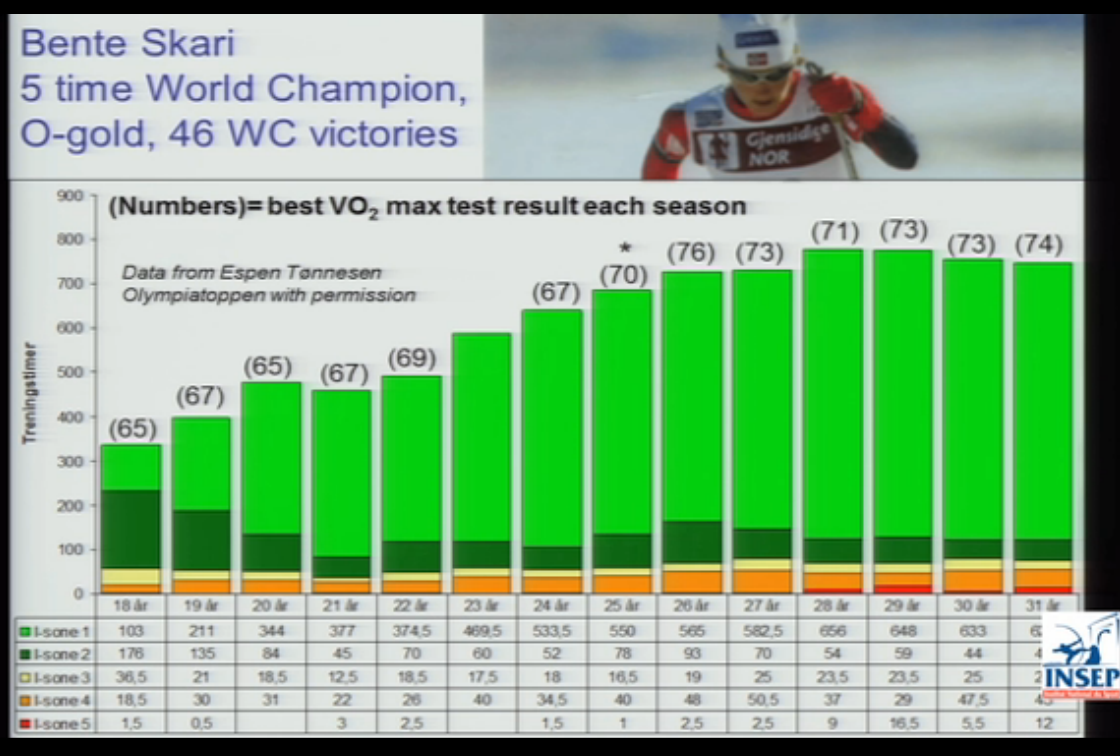To illustrate some of the concepts presented recently, let’s look at a great example of the power of record keeping, a methodological scientific approach to training and the possible value in n=1 reports.
This slide from one of Stephen Seiler’s excellent review presentations on Periodized Training shows the training data over the entire career of Bente Skari, one of the most successful nordic skiers ever. She was an endurance athlete, competing mainly over 5/10/15k.
This shows the distribution of her training intensity from age 18 on the left through to age 31 (one vertical bar per year). The number atop each bar is her laboratory determined VO2max level that year.
The vertical bars represent her annual training load in hours, the colors show the breakdown of intensity into a 5 zone system. Light green is zone 1 (light aerobic, which Speedfarmers learn to love!), dark green is high aerobic yet still well below lactate threshold, generally below the first ventilatory threshold that occurs about 78% HRmax. The yellow zone is traditional threshold work, around marathon to 1/2 marathon pace which dominates many marathon programs and many runner’s mindsets. Orange and red zones are above LT, approximately 10k and 3/5k efforts.
Several fantastic things of note come out of this chart:
1) At the start of her career Bente was doing proportionately more threshold work (yellow and orange) than at any other point over the next dozen years. Her easy training also trended mostly towards the high end of the aerobic zone (dark green). During this period herVO2 max showed little to no improvement for 3 years.
2) During her 3rd year, she started working with a new coach who guided her for the rest of her skiing. The most remarkable change was a reduction in the intensity of her training. Easy work got easier (more light, less dark green). There is less threshold work. She wanted to get faster and fitter, so started training more easily.
3) This pattern held for the rest of her career, generally increasing volumes of the easiest zone 1 training, a lower % of zone 2 training with only a very small amount of threshold work.
4) This approach saw her gradually increase her VO2max until at age 25 she hit 70 ml/kg/min and won her first World Cup race. Note that ski racing at this level and these distances happens at an intensity (orange and red zones) well beyond most all of her training.
5) She continued this pattern of mostly easy training (86-90% of training time) for the rest of her career, continuing to gain fitness and winning 45 more world cup races, 5 world championships and Olympic gold.
So in summary, for this one athlete and her particular physiology, the training strategy of a reduction of training intensity, with increased volume of that easiest work seems to have paid off.
Contrast to our typical North American approach (and perhaps human nature itself) which tells us that as we get faster, fitter and more competitive that the path to success is to push hard and dig deeper…

